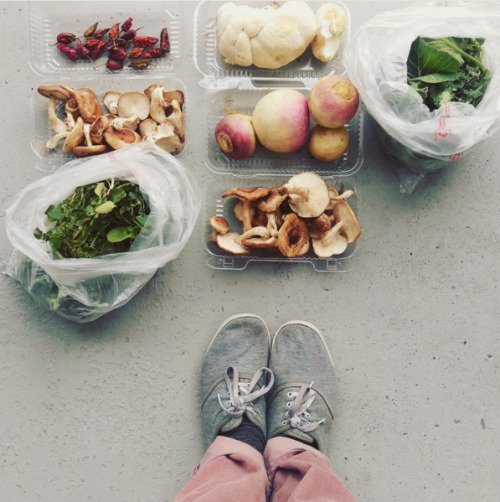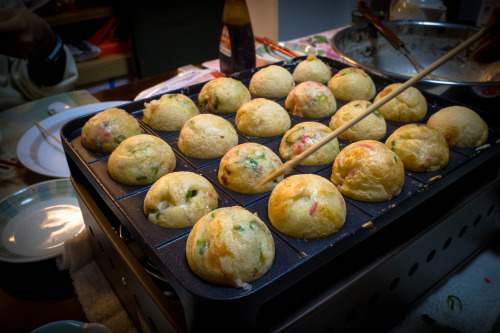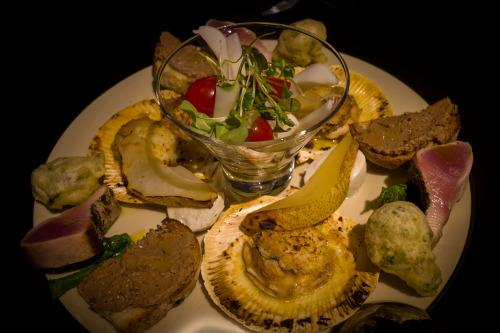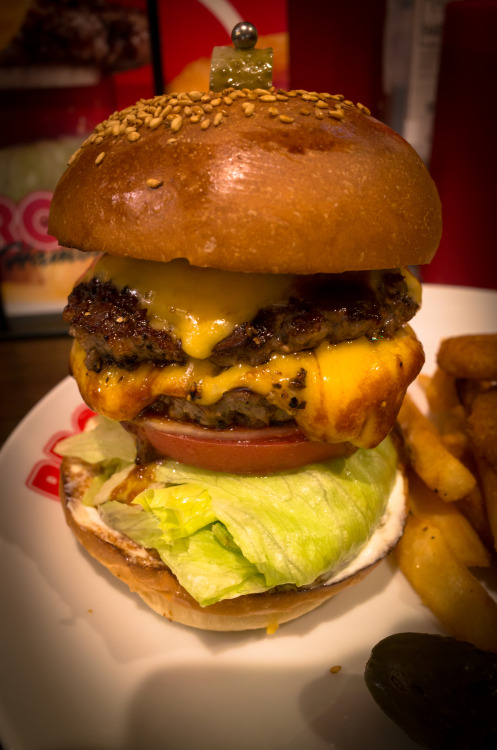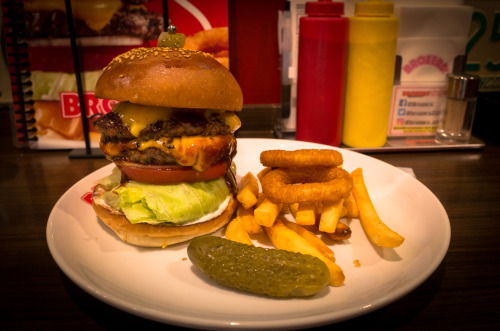#local food
Morning Market - Lak Lake - Vietnam (Novembre 2018)
Check my Instagram for more pictures: Florian__dre
Post link
Morning Market - Lak Lake - Vietnam (Novembre 2018)
Check my Instagram for more pictures: Florian__dre
Post link
A terrific project from Calypso Farm in Ester, near Fairbanks, and a model for communities elsewhere, it’s The Tour de Plants, this Saturday, July 27. The notion is to ride a bike, or sponsor a rider to move from one school garden to another, promoting school gardening, local eating, hands on growing, and more. It’s a fundraiser for the Schoolyard Garden Initiative.
The fellow with the major bowl of veggies is part of Chinook Charter School’s first ever schoolyard garden.
Post link
February 26th is CSA Signup Day!
What is CSA Signup Day, you ask? It’s our favorite thing, a made up holiday which celebrates farms and they way local food producers enliven the local foodscape and the economy. It seem that around the end of February is the time that most people are signing up for CSAs so why not throw a party?
CSA stands for Community Supported Agriculture which means community members invest directly in their local food producer up front before a seed is in the ground. The customer gets a steady supply of seasonal local veggies at a great price. The reason that this is so important is because farmers invest a lot into producing a highly perishable product and, without buyers up front, can face major challenges at harvest time. They buy seeds, mushroom spawn, baby chicks; they get the truck tires changed; they fix the greenhouse all before you ever set foot out the door to the farmer’s market. CSAs help spread the risks and benefits of agriculture out over the entire community keeping farmers afloat and bellies full.
What better time than now to mention the connection between CSAs and Black History?

That’s right, like so many things, CSAs have a black person to thank for existing. Booker T. Whatley, the American farm genius and professor, created and perfected the model that changed the game for small farmers. In his book “How to Make $100,000 Farming 25 Acres” Whatley presented a blueprint to help the average farmer overcome the common obstacles of a notoriously harsh industry.
“…The clientele membership club is the lifeblood of the [farm]. It enables the farmer to plan production, anticipate demand, and, of course, have a guaranteed market. The farmer has to seek out people—city folks, mostly—to be members of the club. The annual membership fee, $25 per household, gives each of those families the privilege of coming to the farm and harvesting produce at approximately 60 percent of the supermarket price…one of these 25-acre farms should be able to support 1,000 member families, or around 5,000 people…[The farm] should be located within 40 miles of some metropolitan center; that’s pretty much a prerequisite for setting up one of these farms…” Booker T. Whatley

Those are the written words of an Alabama farmer published several decades before the European and Japanese farmers who are often given credit for making CSAs popular in the US…weeeeeeird. No, it’s not weird. It’s systemic but you can change all that!
Here are ways you can celebrate CSA Day’s Black History
1)Join a CSA Operated by a Black Farmer
The Legacy of Booker T. Whatley lives on at these DC area farms and you can join them today:
Good Sense Farm’s Wild Food CSA - Whether you are a CSA verteran or a newbee we highly recommend joining our CSA. The shares are made up of delicious veggies from local farms, cultivated mushrooms and foraged edibles. In yoru box, you get the makings of a delicious journey to the edge of the wilderness and back. Pictured above was the haul from our first month’s share with wintercress, baby greens, several types of mushrooms, heirloom fish peppers and turnips. Recipes included. Join here.
Rainbow Hill Farm CSAFarmer Gale’s CSA is wonderful and we love her strategy. Here’s what makes it unique:
Instead of bogging you down with more of the same old produce, we grow the stuff you won’t find anywhere else (think Asian greens like mizuna and tat soi, turmeric, ginger, and over two dozen varieties of heirloom tomatoes) and our deliveries are always a manageable size. No more waste, no more monotony. And we promise we’ll never leave you hanging with a basket of mystery produce. Each week we’ll share recipes, tips, and tricks to help you make the most out of your bounty.
Community Farming Alliance Never fear, I have word that the farmers of CFA will announce their CSA plans soon! in the meantime, Three Part Harmony Farm is selling Veggie Shares! Get yours today.
5 a Day CSA - Farmer Vicki makes sure to put the most accessible healthy options in the weekly wellness box she puts together.
*If you are not in the DC area, this list might not be the most helpful but there are some resources out there for how to find farms in your area like Local Harvest.
2)Read about it!
Natasha Bowens, author of The Color of Food wrote this great article in Mother Earth News about Whatley and they also published his small farm plan here too. Also, if you want to get me his book as a gift, it’s right here on my wishlist.
3)Tell the story to everyone you know!
How you do it is up to you but we all have a duty to set the record straight!
Happy CSA Day!
Post link
Solarpunk Food
Let’s do a little thought exercise about food. Diet culture makes us isolated while the commodification of food pushes global food trends instead of regional variation. But we’re solarpunks, right? So we’re all about imagining a better future. Let’s imagine a world where we’ve healed our cultural relationship with food and are sourcing things more locally.
Think about where you live right now. Think about the kinds of things that can be raised or grown in your area. Then start to think about what recipes could be made for the following social events. We’re going to start small to make this more manageable, ok? Do as many or as few of these as you feel up to doing.
In this bright sustainable future full of local ingredients:
- What snack are you bringing to game/movie night?
- What soup do you make for a sick loved one?
- What’s your go-to potluck recipe?
- What treat do you welcome a new neighbor with?
- What hot beverage do you share in fall/winter?
- What cold beverage do you share in spring/summer?
How did that feel? What did you come up with?
Maybe these recipes can be worked into solarpunk stories. Maybe they can be made into a little cookbook. Maybe locally sourced ingredients are inaccessible to you right now, but are there any recipes you could start practicing anyway?
I love this idea! I’ve definitely been getting more experimental with food and drink over the pandemic. For example…

WITH LILACS!! (Very proud of my recent huge batch of simple syrup!) If you just want the recipe for lilac syrup, scroll straight to the bottom.
However I’m also going answer all the questions, since I have been planning to play around more with underused local ingredients. So in this ideal world…
1. Fresh/dried pawpaw! I recently learned these fruit trees are native to my area, though wild ones are now rare. That was a huge surprise because I’m Canadian and I thought they were more subtropical, but I’m juuuust within the northern tip of it’s range. I’ve yet to try it, but I’ve heard it compared to mango, which I love.
2. Creamy duck and mushroom soup. I already make this one, though I often have to settle for creminis, and would prefer a variety of local wild mushrooms. The couple times I’ve been able to get my hands on some it really brought it to the next level!
3. Chili with wild rice and/or corn chips. I currently use standard grocery store ingredients, but pretty much all of them can be grown locally in the summer and canned/stored dry for use in the cold seasons. I’ve never tried the rice that’s native to where I live, but it’s long been a staple of indigenous cuisine and it’s on my list of things to check out.
4. Fresh baked bread ☺️ With butter and homemade raspberry jam. Or maybe blueberry. There’s plenty of berries to choose from here!
5. I love making mulled wine and cider for my friends, and while grapes and apples grow here, it does require a bunch of imported spices. If I had to choose something without, maybe cedar tea with honey? While I haven’t tried it myself yet, I’m a big fan of evergreeny flavours, so I suspect it would be right up my alley.
6. LILAC LEMONADE. This is already my signature drink for spring/summer parties, and it’s quite easy to make. Yes I knoooow, lemons aren’t native, but you can grow them in greenhouses and in pots. My mom actually has a potted one that fruits every year! I can’t really say the same for the sugar, but hey, we said this was an ideal world, so let’s assume it’s produced ethically and sustainabily in this scenario.
But. Back to the LILACS. They’re one of my favourite flowers, the smell is heavenly, but they’re a short-lived seasonal experience. Enter simple syrup! Because it turns out, like many flowering trees, lilacs are edible! You need to be sure they haven’t been exposed to harmful pesticides, but other than that you’re good to go. Once you have the syrup, it can be safely stored in the fridge for at least a few weeks, or frozen almost indefinitely and brought out to mix with drinks whenever you like. It’s quite nice in a gin and tonic, but my go-to crowd pleaser is the lemonade.
So here’s my recipe:
1 Cup white sugar
1 Cup water
2 Cups lilac blossoms (Less precise than the other measurements. I use very generous cups)
Optional: 3-4 berries or other colourant. Left alone, the syrup is usually a light brown, with a muted tint that reflects the colour of your lilacs. I’ve successfully used blackberries, blueberries, and plum skins in small amounts to add a rich purpley-red colour without changing taste, which then dilutes to bright pink in my lemonade.
- Snip off several bunches of lilacs, then rinse thoroughly to remove bugs and dirt. Gently shake the water off and lay them on a towel to dry while you prep. (It may be hard to judge how much this will yield until you’ve done it a few times, but I pile mine into an 11" mixing bowl and find this works out to roughly 8 cups of individual blossoms.)
- Remove the blossoms by hand or with a small pair of scissors, leaving as little stem as you can. It’s tedious, but worth the effort to keep the bitter green bits out of the mix.
- Add the water to a pot on high heat and bring to a strong simmer. You can go full boil just keep in mind it shouldn’t stay there for the next steps.
- Add the sugar and lower heat to medium. Stir continuously to avoid burning any sugar at the bottom.
- Once the sugar is fully dissolved, stir in the lilac florets plus whatever you add for colour, and bring heat down to low. Cover and let simmer for 10 minutes.
- Remove from heat and allow to steep (like tea) for up to 8 hours, remaining covered. This is flexible, but I suggest at the very least to let it steep until it reaches room remperature, and not to go over a full day, as it can increase bitterness beyond a certain point. I like to make mine first thing in the morning and come back to it around dinner.
- Pour the syrup through a fine mesh strainer and into a clean vessel. Use a spoon to aggressively squeeze out every last drop of flavour from the remaining mush.
- To store, I recommend corked/capped bottles for the fridge, and sealable plastic containers for the freezer. I find old yogurt tubs perfect for this. Remember to leave room for expansion! Filling only ¾ of the way is generally enough.
And this is the rough ratio I use for the lemonade:
750 ml Lemon juice (equivalent to about 15 lemons)
1 L Lilac syrup
2 L Water
I tend to wing it on this part and adjust to taste, so you may want to play around a bit to find the balance you like.
And playing around is half the fun! This method can also be applied to pretty much any foraged edible flower, such as cherry blossoms, magnolias, violets, etc. Just make sure to do your research if you try a new plant so you know it’s safe.
Hey friends!! I’ll be traveling to Seattle, WA to see my father for the first time in ten years. Any locals know the good places to eat??? As a hard core foodie I’d love to hear your favorites! Also if you know of any fun local places or activities. ❤️ thank you!!
Chef Nadine Nelson celebrates Italian cuisine and starts Spring with socializing and the bounty of the first harvest.
She shows us how to make a Ramp, Asparagus and Morel Frittata which uses farm fresh eggs, seasonal produce, and is the perfect dish to make for an antipasti party.
Global Local Gourmet specializes in interactive culinary education.
Solarpunk Food
Let’s do a little thought exercise about food. Diet culture makes us isolated while the commodification of food pushes global food trends instead of regional variation. But we’re solarpunks, right? So we’re all about imagining a better future. Let’s imagine a world where we’ve healed our cultural relationship with food and are sourcing things more locally.
Think about where you live right now. Think about the kinds of things that can be raised or grown in your area. Then start to think about what recipes could be made for the following social events. We’re going to start small to make this more manageable, ok? Do as many or as few of these as you feel up to doing.
In this bright sustainable future full of local ingredients:
- What snack are you bringing to game/movie night?
- What soup do you make for a sick loved one?
- What’s your go-to potluck recipe?
- What treat do you welcome a new neighbor with?
- What hot beverage do you share in fall/winter?
- What cold beverage do you share in spring/summer?
How did that feel? What did you come up with?
Maybe these recipes can be worked into solarpunk stories. Maybe they can be made into a little cookbook. Maybe locally sourced ingredients are inaccessible to you right now, but are there any recipes you could start practicing anyway?
I’ll go first:
- Popcorn or tortilla chips with bean dip
- Creamy potato soup with carmelized onion and rosemary
- A cold millet salad with chopped garden veggies or white bean chili
- This one is tough because I don’t do a lot of baking actually. My area used to grow a lot of sugar beets so my options are pretty wide. Shortbread is an option. Maybe some kind of pie or turnover?
- Apple cider
- Iced mint and nettle tea
Oh this is fun!
1. Popcorn, hands down, favorite snack. I grew some last year, it was delicious!
2. Either a simple veggie or Irish Potato Soup.
3. This is a hard one…maybe mini quiches or savory pies? I made onion, goat cheese and mushroom mini pies a while ago, they were good. If it’s late summer, fresh salsa. I made so much salsa last year, it’s so good.
4. Depends on the season, if things are growing it’d probably be fresh produce. Otherwise perhaps some fresh baked bread, with rosemary and garlic.
5. Spiced apple cider. No cinnamon, but there’s a native spicebush that supposedly has a similar flavor to allspice? I’ve yet to get a chance to experiment.
6. Water with strawberries and mint!
- Mod S
“What exactly are we doing here?” was a question asked in a moment of self-reflection in the office of the local food & farming NGO where I work. It can be hard to pinpoint exactly how we measure the change we’re seeking even when we sense forward momentum. All we know is that there is a need for change, for re-evaluation of our food sources and conduct, for uncovering what is truly best for our whole selves.
I read this quotation from Chris Lowry & the Brewers Plate team in a Treehugger blog about their event in Toronto last night, and it is one of the best succinct calls-to-action for the local food movement that I’ve heard in a while.
“Food is the harbinger of where we all need to go now. The future lies increasingly in regional self-reliance all over the world, with local living economies trading fairly, useful, durable goods, food, and good low-carbon ideas. A shift toward regional self reliance, with food leading the way for the whole economy, is our best chance to stem the rising tides of changing weather and rivers, diminishing fossil fuels, scarcities of fresh water, fish, soil - what many are now calling ‘peak everything’.”
-
From Treehugger:
The Rouge National Urban Park is in its final day of the public involvement phase. Make sure you fill out this survey (http://pc.sondages-surveys.ca/s/rouge/?l=en) by Monday October 8th (tomorrow!) to get your say in for what you hope to see in the park!
Read more here: http://sustainontario.com/2012/10/04/12544/blog/news/help-create-a-new-national-park-in-ontario-that-includes-agriculture
Rouge Park
Post link
China Plans to Feed 80 Million People With ‘Seawater Rice’
Jinghai district in northern China is hardly a rice-growing paradise. Located along the coast of the Bohai Sea, over half of the region’s land is made of salty, alkaline soil where crops can’t survive. Yet, last autumn, Jinghai produced 100 hectares of rice.
Known as “seawater rice” because it’s grown in salty soil near the sea, the strains were created by over-expressing a gene from selected wild rice that’s more resistant to saline and alkali. Test fields in Tianjin—the municipality that encompasses Jinghai—recorded a yield of 4.6 metric tons per acre last year, higher than the national average for production of standard rice varieties.
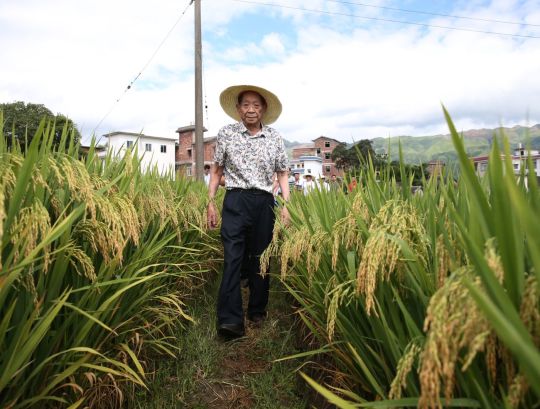
China has been studying salt-tolerant rice since at least the 1950s. But the term “seawater rice” only started to gain mainstream attention in recent years after the late Yuan Longping, once the nation’s top agricultural scientist, began researching the idea in 2012.
Yuan, known as the “father of hybrid rice,” is considered a national hero for boosting grain harvests and saving millions from hunger thanks to his work on high-yielding hybrid rice varieties in the 1970s. In 2016, he selected six locations across the country with different soil conditions that were turned into testing fields for salt-tolerant rice. The following year, China established the research center in Qingdao where Wan works. The institute’s goal is to harvest 30 million tons of rice using 6.7 million hectares of barren land.
Article goes on to speak about rising sea levels and how salt-tolerant rice will have big implications for coastline countries in the coming decades.
China Plans to Feed 80 Million People With ‘Seawater Rice’
Post link






